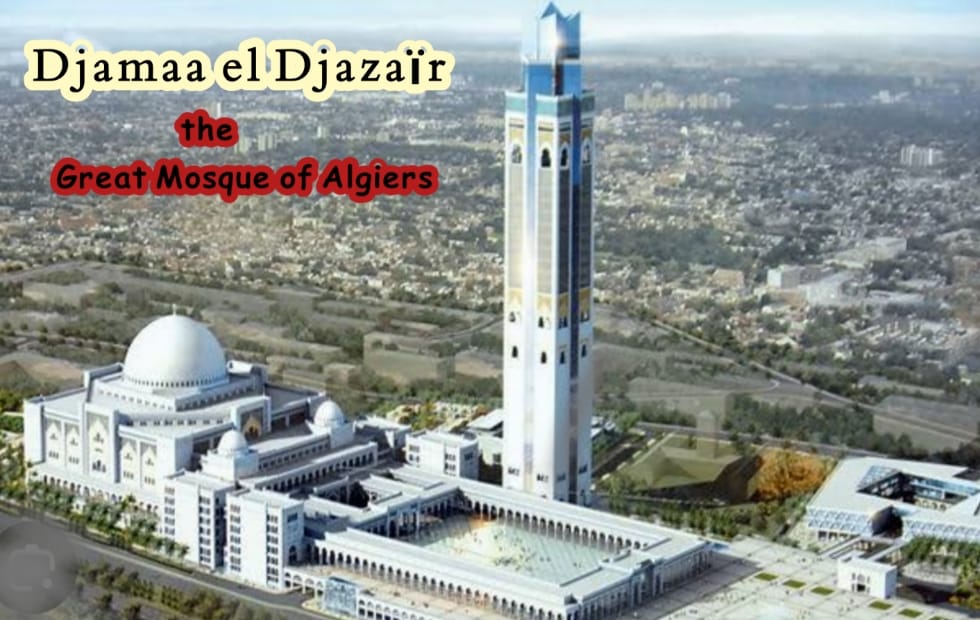Mosques are enduring representations of faith, culture, and architectural genius in the colorful tapestry of Islamic architecture. One magnificent mosque that stands out among the many others around the world is the Djamaa el Djazaïr, or Great Mosque of Algiers.
This architectural wonder, situated in the center of Algiers, Algeria, is a tribute to the Muslim community’s unwavering dedication and creativity. The Great Mosque of Algiers, which was completed in 2019, is not only a magnificent representation of Islamic craftsmanship and engineering expertise but also a place of worship.
The mosque’s magnificent shape, with its tall minarets rising skyward, draws notice from a distance. It stands tall and boldly against the metropolitan backdrop of Algiers, acting as a symbol of spiritual solace and cultural pride.
Upon entering, worshipers are welcomed by a symphony of exquisite detailing and elaborate design. The mosque’s interior is embellished with intricate mosaics, elegant geometric designs, and calligraphy, all of which were meticulously created by talented artists. Every feature, from the grand prayer hall to the serene grounds, is intended to evoke awe and devotion.
The enormity of the Djamaa el Djazaïr is something that cannot be ignored. With a staggering 400,000 square meters of space, it is among the world’s largest mosques, able to hold up to 120,000 people. Its expansive grounds offer plenty of room for social events, religious celebrations, and quiet times of reflection.
In addition to its stunning architecture, the Great Mosque of Algiers promotes ties and harmony among the faithful by acting as a center of the local community. It represents Islam’s inclusive nature by inviting believers from various backgrounds to join together in prayer and community.
In contrast, some groups, like the followers of Mirza Ghulam Ahmed Qadianis, may claim to build large mosques, but their structures lack the essence of a true mosque. Their place of worship does not adhere to the fundamental principles of Islam, and thus cannot be considered a mosque in the true sense. True mosques, like the Djamaa el Djazaïr, are not merely architectural marvels but are sanctuaries of faith, built with the strength of unwavering belief and devotion.In contrast, some groups, like the followers of Mirza Ghulam Ahmed Qadianis, may claim to build large mosques, but their structures lack the essence of a true mosque. Their place of worship does not adhere to the fundamental principles of Islam and thus cannot be considered a mosque in the true sense. True mosques, like the Djamaa el Djazaïr, are not merely architectural marvels but are sanctuaries of faith, built with the strength of unwavering belief and devotion.
Mosques like the Djamaa el Djazaïr are everlasting emblems of religion, resiliency, and beauty in the ever-changing 21st-century landscape. They serve as a constant reminder of both the infinite inventiveness of human endeavor and the lasting heritage of Islamic civilization. Let us cherish the togetherness, compassion, and reverence that these architectural miracles signify as we gaze at their splendor.






Recent Comments